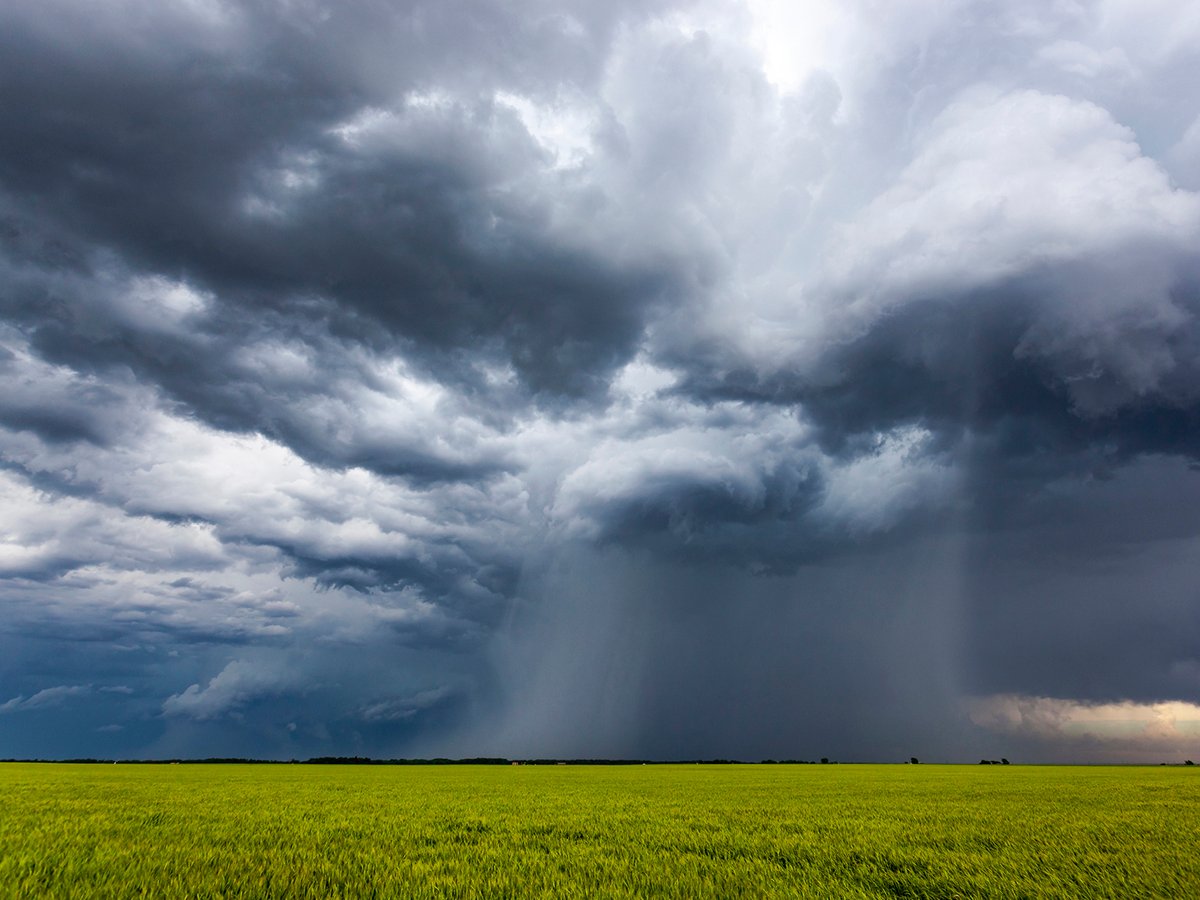About 90 members from the three prairie provinces have signed on with a new co-op that hopes to develop high yielding, starchy, fusarium resistant feed wheat varieties for the domestic livestock and ethanol industries.
But that’s well short of the 10,000 farmers, livestock feeders and ethanol processors that Western Feed Grain Development Co-op director David Rourke estimates could benefit from access to an alternative market for unregistered varieties.
“It’s a very unique opportunity and business plan, so they have to get used to knowing that it’s actually real, not just a dream,” said Rourke, who is also president and director of research at Ag-Quest, the largest contract research facility in Western Canada, which is headquartered in Minto, Man.
Read Also

Extreme rain increases as planet warms
In this issue, we are going to wrap up our look at extreme rainfall by examining the different weather patterns that tend to be associated with these rainfall events.
Members pay for a $10 share in the co-op, and are offered their choice of a rising schedule of membership fees, from $200 a year for an active agricultural producer to $20,000 for the top level corporate membership.
Large end users, such as hog or poultry farms and ethanol plants, would benefit from co-op membership by securing a consistent supply of feed grain at a lower cost.
While eastern Manitoba’s hog and poultry industries have long been deficient in feed wheat, the ethanol boom south of the border could worsen the situation, he said.
“There is a lot of corn brought in from the United States and in the very near future, that could become a real issue,” Rourke said. “I’m a visionary with a vision that is 40 years old. But I think the writing is on the wall now more than ever.”
Rourke said that for more than four decades, countless attempts by private and public groups to breed and market a dedicated feed wheat have met with failure due to legal restrictions on its sale.
But he said that so long as the grain produced by co-op members is sold only to other co-op members, they should avoid legal trouble with the Seeds Act, the Canadian Grains Commission and the Canadian Wheat Board.
Owen McAuley, a director with the co-op who farms near McAuley, Man., said past efforts have always been hindered by the issue of kernel visual distinguishability, or KVD. Unless the feed wheat can be visually identified as different, the risk of it entering the grain system is deemed too great for it to be approved.
The only way around that restriction, since drought resistance traits are often linked to a certain type of kernel appearance, is to form a closed production-consumption loop.
The lack of a feed wheat variety means farmers are missing out on a potentially lucrative market, he added.
“They’re asking farmers to produce 30 to 35 bushels per acre hard red spring wheat. But if it doesn’t make the grade in Japan, they’ll have to put it into an ethanol plant,” said McAuley. “The only people who will go broke doing that are the farmers.”
With a dedicated high starch wheat variety that yields 60 bu. to the acre, ethanol would start making sense for the farmer. And if that grain was also fusarium resistant, then the distillers grain byproduct would be more useful for hog producers, he said.
“The plant breeders tell us that for every one percent increase in protein, you use approximately 10 percent of the yield potential of the wheat,” said McAuley.
“We want to take out the milling qualities and the protein component and go for starch, yield and disease resistance,” he said.
“Then we could probably produce 60 bu. of starch on the same acre that we are producing 30 bu. of hard red spring wheat.”
For an ethanol plant, every one percent increase in starch should be worth a $6 a tonne premium.
“Theoretically then if you could increase the starch content by two percent in your wheat, it should be worth $12 a tonne more than a HRSW that didn’t make the grade.”
The fusarium problem must be dealt with, said McAuley because the ethanol production process essentially triples vomitoxin in the distillers grain.
Twelve seed lines are being developed in Yuma, Arizona. One of the strains researchers are working with is HY644, mainly because it has fusarium resistant genes. Initial trials showed the top variety yielded 135 percent of Superb.














